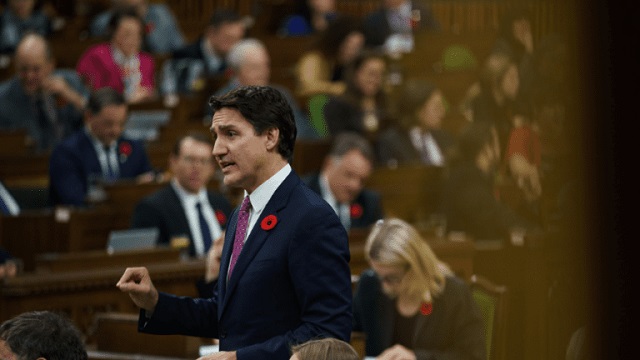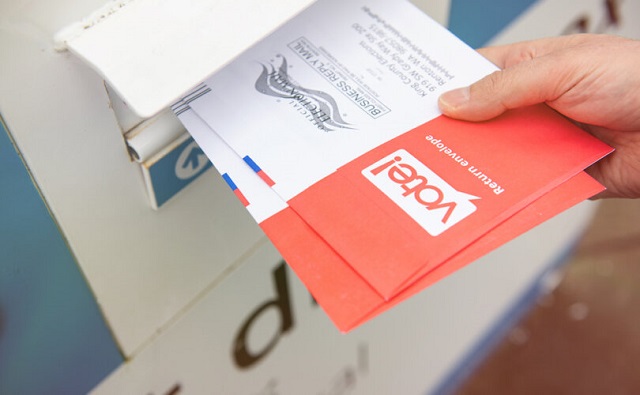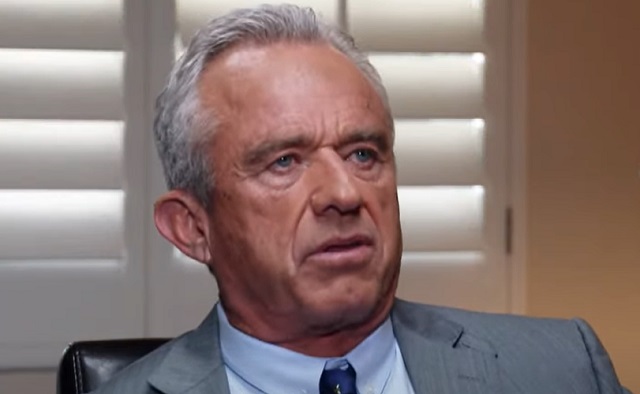Automotive
Of all top-heavy Liberal climate policies, electric-vehicles mandate is the worst

From the MacDonald Laurier Institute
“History has shown us time and again that government quotas are no match for the market.”
To meet Canada’s commitment to its Paris Agreement climate goals, the federal government has announced increasingly heavy-handed emissions reduction policies this year. It culminated Monday in the publication of regulated targets for electric-vehicle sales: an EV mandate.
History has shown us time and again that government quotas are no match for the market. The Liberals want to show us one more time why this is the case.
There is absolutely nothing wrong with EVs. Those who own them tend to love them. The car manufacturing industry is all-in on EVs, and globally has committed US$1.2-trillion toward electrification.
The problem is in the attempt to dictate, by government fiat, what consumers can or cannot buy. In the case of the EV mandate, the federal government is using dealers to enforce their strategy. One hundred per cent of light duty vehicles sold in Canada by 2035 must be EVs, with mandatory sales targets starting at 20 per cent in 2026.
If a dealer falls under the prescribed target for a particular year, they are required to buy expensive credits or pay for public charging stations to atone for their sin. The most likely response will be to sell fewer gas-fuelled vehicles than demand would indicate in order to meet the required ratios and avoid the penalties.
You don’t have to be an economist to predict the outcome: waiting lists, shortages and a black market for internal combustion engines. But it’s worth being specific about why a federal EV mandate can’t overcome the laws of supply and demand.
The first is the cost of EVs: They are more expensive than internal combustions engines. EV adoption is overwhelmingly led by urban, high-income consumers who can charge at home. Aside from nudging auto manufacturers to build charging stations, whose uptake is questionable, the mandate addresses none of the logistical and financial constraints that apartment dwellers, renters and low-income car owners face in owning an EV.
The federal government has pointed to Norway, where almost 90 per cent of new car sales are EVs, as an example of how these challenges can be overcome. But that country’s EV uptake is driven by a hefty subsidy, more than triple the Canadian amount, at about $16,000 a vehicle (and made possible by the revenues from their oil and gas exports). That’s the equivalent of a $700 a tonne carbon tax, and last year it represented 2 per cent of their national budget. I can think of no more expensive way to reduce emissions.
The second problem with the EV mandate is that the dealers don’t control the electricity grid. In parallel with the mandate, the federal government is also pushing Clean Electricity Regulations, which will severely strain utilities’ ability to meet additional demand. And it’s not just capacity that matters – it’s the ability to distribute additional power into millions of homes. In many neighbourhoods and small towns, that distribution capacity does not exist, and it will be very expensive to add.
The third is range in rural and remote areas. The federal government acknowledges that lack of charging infrastructure and battery performance in cold weather is an issue. But they just assume that it will be worked out over time – no need to worry about it now.
Fourth is the ability of manufacturers to ramp up their production to meet EV mandates and incentives across the Western world. This will depend on a supply chain that does not yet exist, from critical minerals, to mechanics, to electricians. And it will depend on greater profitability in the sector, which, outside of China, is mostly selling EVs at a loss.
No amount of regulation from Ottawa can solve all of these problems. There are some that see the EV mandate as a Hail Mary from a government that is unlikely to win re-election. The mandate, therefore, is a foolish but benign distraction.
But for refiners, whose profitability depends on some level of gasoline demand, it causes tremendous uncertainty. As long as the EV mandate hangs over their heads, they will be unlikely to invest in upgrading their existing assets, even to produce clean fuels (as mandated this year under the Clean Fuel Regulations, but which EVs would not use), and they will be very reluctant to invest in new refineries.
With our fast growing population, this will inevitably squeeze the availability of the many refined products and distillates the Canadian economy still needs. There is a cost to these policies, even when unimplemented.
The series of climate policies the Liberals have imposed since Steven Guilbeault was appointed Minister of Environment have mostly applied to industry. But the EV mandate targets consumers, limiting what they can and cannot buy when it comes to their vehicle.
Alas, consumers are voters. And command economies don’t work well in democracies.
Heather Exner-Pirot is director of energy, natural resources and environment at the Macdonald-Laurier Institute.
Automotive
The EV ‘Bloodbath’ Arrives Early

 From the Daily Caller News Foundation
From the Daily Caller News Foundation
By David Blackmon
Ever since March 16, when presidential candidate Donald Trump created a controversy by predicting President Joe Biden’s efforts to force Americans to convert their lives to electric-vehicle (EV) lifestyles would end in a “bloodbath” for the U.S. auto industry, the industry’s own disastrous results have consistently proven him accurate.
The latest example came this week when Ford Motor Company reported that it had somehow managed to lose $132,000 per unit sold during Q1 2024 in its Model e EV division. The disastrous first quarter results follow the equally disastrous results for 2023, when the company said it lost $4.7 billion in Model e for the full 12-month period.
While the company has remained profitable overall thanks to strong demand for its legacy internal combustion SUV, pickup, and heavy vehicle models, the string of major losses in its EV line led the company to announce a shift in strategic vision in early April. Ford CEO Jim Farley said then that the company would delay the introduction of additional planned all-electric models and scale back production of current models like the F-150 Lightning pickup while refocusing efforts on introducing new hybrid models across its business line.
General Motors reported it had good overall Q1 results, but they were based on strong sales of its gas-powered SUV and truck models, not its EVs. GM is so gun-shy about reporting EV-specific results that it doesn’t break them out in its quarterly reports, so there is no way of knowing what the real bottom line amounts to from that part of the business. This is possibly a practice Ford should consider adopting.
After reporting its own disappointing Q1 results in which adjusted earnings collapsed by 48% and deliveries dropped by 20% from the previous quarter, Tesla announced it is laying off 10 percent of its global workforce, including 2,688 employees at its Austin plant, where its vaunted Cybertruck is manufactured. Since its introduction in November, the Cybertruck has been beset by buyer complaints ranging from breakdowns within minutes after taking delivery, to its $3,000 camping tent feature failing to deploy, to an incident in which one buyer complained his vehicle shut down for 5 hours after he failed to put the truck in “carwash mode” before running it through a local car wash.
Meanwhile, international auto rental company Hertz is now fire selling its own fleet of Teslas and other EV models in its efforts to salvage a little final value from what is turning out to be a disastrous EV gamble. In a giant fit of green virtue-signaling, the company invested whole hog into the Biden subsidy program in 2021 with a mass purchase of as many as 100,000 Teslas and 50,000 Polestar models, only to find that customer demand for renting electric cars was as tepid as demand to buy them outright. For its troubles, Hertz reported it had lost $392 million during Q1, attributing $195 million of the loss to its EV struggles. Hertz’s share price plummeted by about 20% on April 25, and was down by 55% for the year.
If all this financial carnage does not yet constitute a “bloodbath” for the U.S. EV sector, it is difficult to imagine what would. But wait: It really isn’t all that hard to imagine at all, is it? When he used that term back in March, Trump was referring not just to the ruinous Biden subsidy program, but also to plans by China to establish an EV-manufacturing beachhead in Mexico, from which it would be able to flood the U.S. market with its cheap but high-quality electric models. That would definitely cause an already disastrous domestic EV market to get even worse, wouldn’t it?
The bottom line here is that it is becoming obvious even to ardent EV fans that US consumer demand for EVs has reached a peak long before the industry and government expected it would.
It’s a bit of a perfect storm, one that rent-seeking company executives and obliging policymakers brought upon themselves. Given that this outcome was highly predictable, with so many warning that it was in fact inevitable, a reckoning from investors and corporate boards and voters will soon come due. It could become a bloodbath of its own, and perhaps it should.
David Blackmon is an energy writer and consultant based in Texas. He spent 40 years in the oil and gas business, where he specialized in public policy and communications.
Automotive
Biden’s Kill Switch: The Growing Threat of Government Control of Your Car

From StosselTV
The government may soon be able to shut down your car. Biden’s $1.2 trillion infrastructure bill includes a kill switch for new cars.
In an effort to reduce drunk driving, government wants devices in cars that will monitor and limit impaired driving. But there’s a big problem: these devices give government control over your car.
Automotive engineer and former vintage race car driver Lauren Fix points out the dangers in my video.
After 40+ years of reporting, I now understand the importance of limited government and personal freedom.
——————————————
Libertarian journalist John Stossel created Stossel TV to explain liberty and free markets to young people.
Prior to Stossel TV he hosted a show on Fox Business and co-anchored ABC’s primetime newsmagazine show, 20/20.
Stossel’s economic programs have been adapted into teaching kits by a non-profit organization, “Stossel in the Classroom.” High school teachers in American public schools now use the videos to help educate their students on economics and economic freedom. They are seen by more than 12 million students every year.
Stossel has received 19 Emmy Awards and has been honored five times for excellence in consumer reporting by the National Press Club. Other honors include the George Polk Award for Outstanding Local Reporting and the George Foster Peabody Award.
————
To get our new weekly video from Stossel TV, sign up here: https://www.johnstossel.com/#subscribe ————
-

 espionage1 day ago
espionage1 day agoOne in five mail-in voters admitted to committing voter fraud during 2020 election: Rasmussen poll
-

 Business1 day ago
Business1 day agoHonda deal latest episode of corporate welfare in Ontario
-

 International2 days ago
International2 days agoRFK Jr tells EWTN: Politicization of the CIA, FBI, Secret Service under Biden is ‘very troubling’
-

 Automotive18 hours ago
Automotive18 hours agoThe EV ‘Bloodbath’ Arrives Early
-

 COVID-192 days ago
COVID-192 days agoTrudeau gov’t has paid out over $500k to employees denied COVID vaccine mandate exemptions
-

 Addictions2 days ago
Addictions2 days agoWhy can’t we just say no?
-

 CBDC Central Bank Digital Currency9 hours ago
CBDC Central Bank Digital Currency9 hours agoA Fed-Controlled Digital Dollar Could Mean The End Of Freedom
-

 Brownstone Institute8 hours ago
Brownstone Institute8 hours agoThe Numbers Favour Our Side








